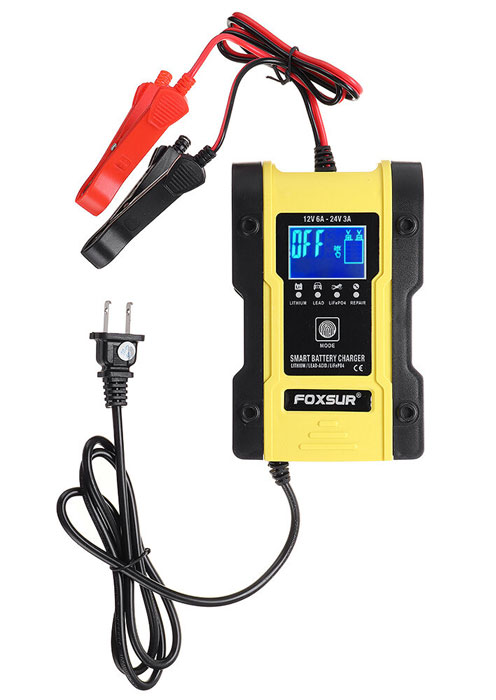A battery charger is a device used to put energy into a secondary cell or rechargeable battery by forcing the electric current through it. The battery charger by converting its stored chemical energy into electrical power. It needs to be recharged of the electrolyte of the battery. A battery charger is a device that provides Direct Current to the battery to restore the used-up electrolyte.
Check the battery charger to see how much power it’s giving off and if you continue to receive a negative reading from the batteries. A bad battery charger will indicate negative reading and you should replace it. As a rule of thumb your battery charger should be a minimum of 10% of the Ah rating of the battery. The battery of 100 Ah would require a 10 Amp charger as a minimum. To prevent overcharging you should keep the charger size to within 20% of the total capacity.
The charger at about 25% of the battery capacity in most battery manufacturing. A 100 ah 12 volt battery would take about a 25 amp 12 volt charger. It may be used to decrease charge time and may decrease battery life.
A fully charged 12 volt battery allowed to rest for a few hours with no load being drawn from it will balance out its charge and measure about 12.6 volts between terminals. When a battery reads only 12 volts under the above conditions and it’s almost fully depleted. We went over three major reasons for the battery not charging and their solutions, the first being the poor input source or the charger being in protection mode, the battery temperature being outside of normal charging range and the safety timer expiration.
This charger might show blinking red right to indicate bad batteries. This indicates that the battery already has a full charge. It is needed to briefly drain the batteries before trying again. If the light blinks red in about 90 seconds after battery insertion, then the battery voltage is too low.
